Natural vs. Artificial
The aids are the means by which the rider communicates his or her will to the horse. Artificial aids, such as whips, spurs, long whips, and all types of special tack, can be very effective when properly used. But the secret to equitation lies in the use of the natural aids — the seat, the hands, and the legs.
François Lemaire de Ruffieu, The Handbook of Riding Essentials
Of all the abuses happening to horses it can be easy to forget that good great riding can still happen when we use only the natural aids and set aside all artificial aids. The natural aids coupled with tact are the best foundation for every rider, and the fairest for the horse.
Tact, in the equestrian sense, is the ability to choose, either by instinct or after quick thought, the most appropriate actions to obtain a specific response from your horse. Correct timing, intensity, an duration of the application of the aids should directly correspond to the physical and mental reactions of your horse.
Authority is acquired through knowledge and skill.
- A novice rider corrects the horse's mistake after it occurs.
- A good rider corrects the mistake when it occurs.
- An educated rider prevents the mistake.
François Lemaire de Ruffieu, The Handbook of Riding Essentials
I really love this clarity put forth on the application of the aids – particularly the natural aids. Taking these thoughts with you when you watch a trainer working or audit a clinic; how often are they preventing mistakes vs. correcting mistakes? In our own riding I think it's most useful to keep working at improving the quality of our aids rather than focusing on the speed of our responses. The speed is not the action, but the correct application of the aid is the action – and that takes slow, methodical and mindful practice.
Emotional Aids
Even when we use only the natural aids, we can still become frustrated, angry, emotional – and take those actions out on the horse; at times intentionally and others unintentionally. Just remember:
Anger, a sign of frustration, results from lack of knowledge.
François Lemaire de Ruffieu, The Handbook of Riding Essentials
We all hit a wall – even (gasp!) the Masters have come to a place where they didn't know the right answer. Embracing the fact that we don't know everything, and that we don't need to know everything can free us from the trap of emotional outbursts. This is particularly tough for those who are teaching and training because they are often approached by students who think they should know everything. Be honest, be open with your students and it serves all involved (including the horse) all the better!
The Seat
The term seat is used to refer to the distribution of the rider's weight on the buttocks and ischia (seat bones). The seat has a tremendous influence on the horse's balance.
- Leaning forwards causes the horse to increase speed.
- Leaning backwards causes the horse to slow down.
- Increasing your weight on the seat bone and stirrup iron on one side causes the horse to bear in that direction.
… A good seat is a quality you must have to control your balance in all circumstances, regardless of your horse's reactions. It requires suppleness and relaxation of the lower back, which acts as a shock absorber.
François Lemaire de Ruffieu, The Handbook of Riding Essentials
The seat is such an important aid, not only in execution but in the order to be practiced and improved in your riding education. Everything we do is connected to the seat; the hand and leg aids are not only influenced by but dependent on the quality of your seat. If your seat is unstable so too will your legs and hands, resulting in unclear, inconsistent and annoying natural aids.
Beyond communication with the horse, the seat is also what we ultimately depend on for security and safety in the saddle. If you have an insecure seat you will be more likely to lean forward and maintain a tighter rein contact for balance; inspiring the horse to speed up, hollow it's back (and make your ride more difficult!), raise it's head (requiring a shorter and shorter rein) and become sporadic in it's maneuvers. In turn as a rider you compensate further by pinching with your legs, making a vicious cycle.
The number one favor you can do for yourself and your horse is to seek out quality lessons to improve your seat. On the lunge, no stirrups, no reins, performing thousands of repetitious exercises on the back of the horse to test and challenge your balance in the saddle.
Have you ever seen a baby trying to walk for the first time? The only way he or she can manage is by leaning on furniture or other objects. As soon as babies learn to bring their feet directly under them, they no longer need to use their hands for support. If you have to rely on the reins, the stirrups, or the pommel of the saddle to stay on your horse, you have not yet mastered your balance. Like a baby, you have to keep your balance by placing your legs under your seat.
The Hands
Secondary to the seat are the hands. Difficult to master, the hands are often overused and relegated to too many tasks as a primary aid.
The hands act, resist, and yield through the reins to regulate the horse's forward motion.
… The hands act to slow the speed, change the gaits (downward), modify the horse's balance and give direction.
They always act without pulling:
- By squeezing the fingers on the reins.
- By turning the wrists, fingernails up (like turning a doorknob) to increase the tension.
- By raising the wrists 2 to 3 inches, to further increase the tension. You can increase the tension still further by leaning the upper body backwards.
These actions are the progressive steps to obtain obedience. They must be of brief duration and repeated if necessary.
… The hands resist to oppose any undesirable initiative taken by the horse. Their resistance should be equal to the horse's but not greater:
- By insisting (i.e., squeezing the fingers on the reins without pulling) until the horse has submitted.
… The hands yield to reward obedience as soon as the horse has obeyed, without losing contact with the horse's mouth:
- By lowering the wrists.
- By moving the wrists forward.
- By opening the fingers.
These actions are the progressive steps to reward obedience.
François Lemaire de Ruffieu, The Handbook of Riding Essentials
Notice the clear actions outlined? The hands are freed from their previous snatch and grab tendencies, and develop into methodical tools to communicate with the horse. You start with small steps and progress into more obvious, but never reverting back to pulling on the reins or physically demanding the horse obey your orders. The horse is allowed to give you an honest answer rather than a physically coerced submission.
The Legs
Sometimes I think of the legs as the often forgotten natural aid. They're relegated to the bottom of the list – like they are now – and given small amounts of attention, just enough to keep them alive and no more. But the legs are extremely useful and quite vital to educate just the same as the other natural aids.
The legs act, resist, and yield to produce and maintain the horse's forward motion — to change the gait (upwards) and increase the speed. They are also used to position the horse's hindquarters and engage his hind legs (cause him to bring his hind legs forward and directly under his body).
They create and sustain impulsion, which is both the horse's attentiveness and the actual will or energy that makes him respond to the rider's commands.
The legs act together at the girth (actually 4-6 inches behind) to drive the horse forward:
- By squeezing and releasing the calves continuously.
- By squeezing and releasing the heels.
- By kicking with the heels.
The legs act individually behind the girth (actually about 8-10 inches behind) to make the horse move his hindquarters (the horse's response to this individual leg pressure is also called leg yielding):
- By squeezing and releasing the calves continuously.
- By squeezing and releasing the heels.
- By kicking with the heels.
- These actions are the progressive steps to obtain obedience.
… The legs resist to prevent or oppose a lateral displacement of the horse's haunches:
- By maintaining pressure with the calves or the heels.
- By kicking if necessary.
… The legs yield to reward obedience:
- By ceasing to act or resist.
- By lightening their pressure.
Your legs should always stay in light contact with the horse's barrel, so that they are ready to act without startling the horse by a sudden movement. When you begin training your horse, your legs will have to act strongly to obtain obedience; as your horse progresses, he will become more sensitive to the aids and your leg action can be more gentle.
François Lemaire de Ruffieu, The Handbook of Riding Essentials
Pretty simple right? Both legs together, or one leg at a time and yield to reward the horse. Sometimes the aids are made to be more complex and confusing – made to be almost too difficult to master – by instructors who don't fully understand them. Remember that as you gain knowledge you're better able to distill that information into more simple terms. The more complex the less it is understood, and that applies in horseback riding as well as any other field.
Now, back to the seat. If your seat is improper how can you intelligently choose to use one or both legs at a specific moment? Do yourself (and your horse) a favor – double check that your seat is properly balanced and your joints supple enough to maneuver properly astride your horse.
Knee Pinching Problems
Sometimes we fall into the habit of pinching with our knees. There can be three causes to this:
- Imbalanced seat; we try to maintain our balance by gripping with the knees.
- Improper leg position; our leg becomes physically unable to act properly and our efforts to use the lower leg results in pinching with the knees.
- Stiffness in our joints; without the proper flexibility throughout our major joints like the hip, we can't effectively position or use the legs.
The first is solved with good seat lessons, oh wait – so are the second and third! Before you start shouting at me that, “I'm just not a very flexible person,” let me tell you that neither was I. In fact I flunked out of kindergarden tumbling class because I wasn't flexible enough to do the crab walk… *sigh* That being said, after many hundreds of hours of excellent seat lessons and dedicated daily stretching routines; I resolved a very bad bulging disk and sciatica pain (excruciating!), and just this year I'm able to do the splits, I've gained that much flexibility in my hips.
Practice makes perfect, and seat lessons should always be coupled with a dedicated stretching routine to maximize the benefits for yourself.
And if you're pinching with your knees intentionally…
em>All my life I have heard some instructors scream, “Squeeze with your knees!” and others, “Squeeze with your calves!” Who is right?
Let us take the example of two fingers squeezing an empty soda can held horizontally. When you squeeze the can with your thumb and index finger above the center, it slides from your grasp. When you squeeze from below the center, you crush the can without dropping it.
On a horse, the principle is the same. If you squeeze with your upper legs and knees, the pressure is applied above the widest part of the horse's barrel. You could be thrown if your horse bucks or stops suddenly. If, however, you squeeze below the midpoint of your horse's barrel, with your calves, you will be glued to the saddle and able to follow your horse's reactions in all circumstances.
If you are at a halt, squeezing with your thighs and knees will produce no reaction whatsoever, but squeezing with your calves and heels will cause your horse to move forward.
Other Natural Aids
Don't forget about your voice, eyes and mind – all important natural aids beside the seat, hands and legs.
The rider's voice is indispensable for teaching a young horse. Your tone of voice creates confidence and respect:
- A quiet voice calms the horse.
- A loud voice upsets the horse.
Words remind the horse what to do and it is most important not to confuse him. You must have a specific word that you use all the time for each command. I have often heard riders shouting “whoa!” as different commands. Would you say “trot” when you want to canter?
… Is the mind the most important natural aid? . . .
- You should train yourself to react promptly. The best way to develop good reflexes is to understand and then to learn, by heart, how and why the natural aids act, resist, and yield. Taking notes or reviewing information in your head before going to sleep is an excellent way to assimilate knowledge.
- You must remember that horses are also beings. They work hard. They get tired. They have likes and dislikes. They are brave or shy. They need love without being too spoiled.
- You need to set goals: small goals at first, and then, eventually, more ambitious ones.
- To solve a major problem, you should break it down into little problems and deal with them one at a time.
François Lemaire de Ruffieu, The Handbook of Riding Essentials
Accord of the Aids
The accord of the aids is the harmonious coordination of all the natural aids. Together, the seat, hands, and legs act, resist, and yield to create, regulate, and facilitate the correct execution of the different movements demanded by the rider. You have to learn to coordinate your hands, coordinate your legs, and coordinate your hands with your legs.
- Your seat sets the rhythm of the gaits.
- Your hands control the horse's forehand, i.e. your left hand controls the horse's left foreleg, and your right hand controls the horse's right foreleg.
- Your legs control the horse's hindquarters, i.e. your left leg controls the horse's let hind leg, and your right leg controls the horse's right hind leg.
- Your legs create the impulsion and your hands regulate it.
There should be constant rapport between the hands and legs. They must never work against each other.
François Lemaire de Ruffieu, The Handbook of Riding Essentials
That being said, the seat is like the telephone for these two to communicate through.
Conclusion
Simplify, organize, practice, rinse & repeat. Did any of these ideas resound well with you and offer you something to work at during your next ride?
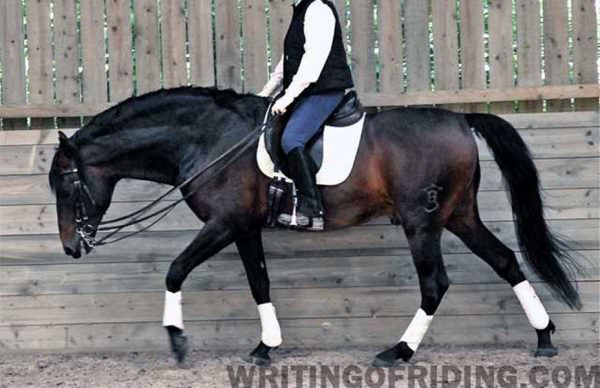

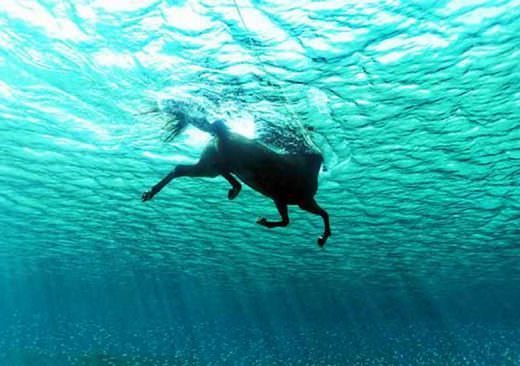
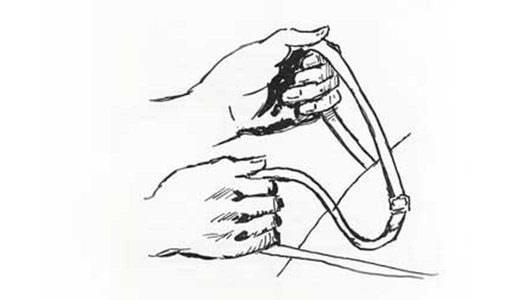
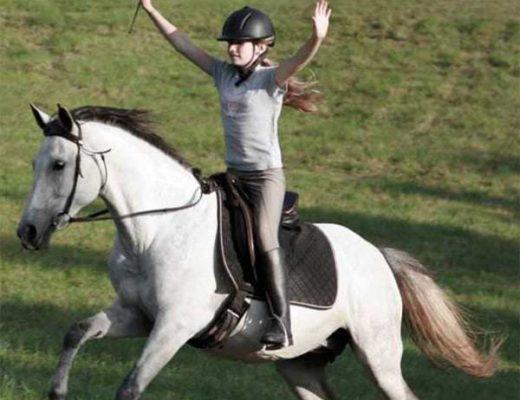
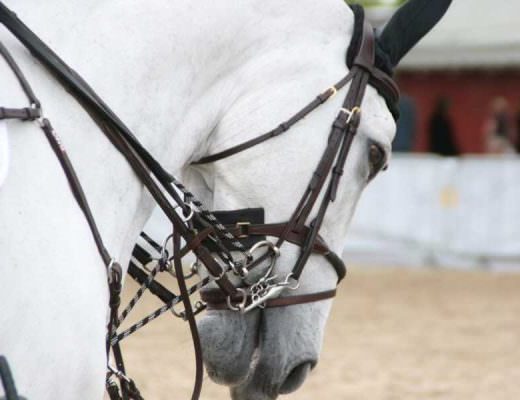
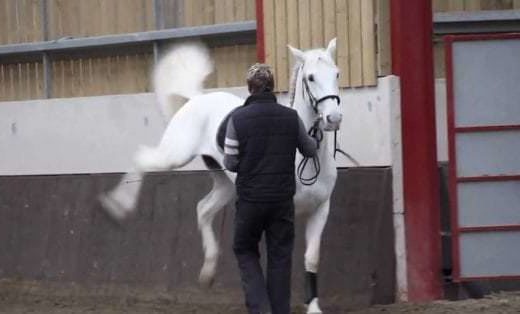
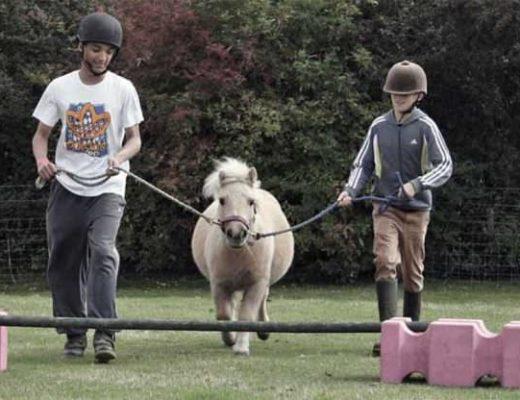
Another great article! I am glad I came across your blog. There are only three types of AIDS: Weight, leg, and rein aids.
Everything else are supportive auxiliary means (voice, gadgets, crops, spurs).
Again, just in my previous comment, I do think there are many undereducated riders out there. It’s not their fault, good edcuation is hard to come by in a country where anyone can call themselves a trainer, there are no regulated standards.
A good start is, like you have obviously done, to read the ‘old masters’ and question instruction that focuses on quick results.
Cheers!
Stefanie Reinhold
http://www.reinholdshorsewellness.com